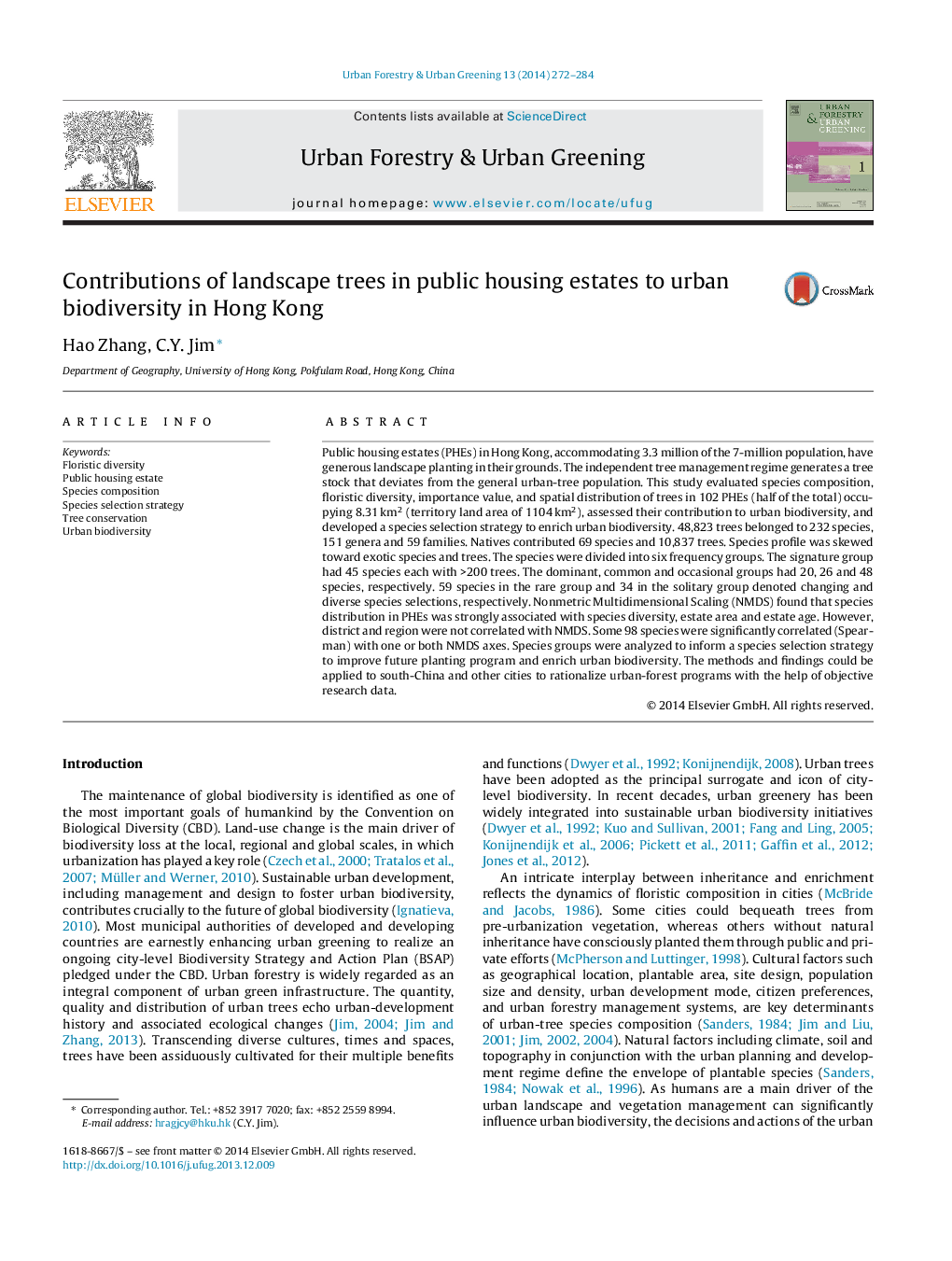| Article ID | Journal | Published Year | Pages | File Type |
|---|---|---|---|---|
| 94063 | Urban Forestry & Urban Greening | 2014 | 13 Pages |
Public housing estates (PHEs) in Hong Kong, accommodating 3.3 million of the 7-million population, have generous landscape planting in their grounds. The independent tree management regime generates a tree stock that deviates from the general urban-tree population. This study evaluated species composition, floristic diversity, importance value, and spatial distribution of trees in 102 PHEs (half of the total) occupying 8.31 km2 (territory land area of 1104 km2), assessed their contribution to urban biodiversity, and developed a species selection strategy to enrich urban biodiversity. 48,823 trees belonged to 232 species, 151 genera and 59 families. Natives contributed 69 species and 10,837 trees. Species profile was skewed toward exotic species and trees. The species were divided into six frequency groups. The signature group had 45 species each with >200 trees. The dominant, common and occasional groups had 20, 26 and 48 species, respectively. 59 species in the rare group and 34 in the solitary group denoted changing and diverse species selections, respectively. Nonmetric Multidimensional Scaling (NMDS) found that species distribution in PHEs was strongly associated with species diversity, estate area and estate age. However, district and region were not correlated with NMDS. Some 98 species were significantly correlated (Spearman) with one or both NMDS axes. Species groups were analyzed to inform a species selection strategy to improve future planting program and enrich urban biodiversity. The methods and findings could be applied to south-China and other cities to rationalize urban-forest programs with the help of objective research data.
